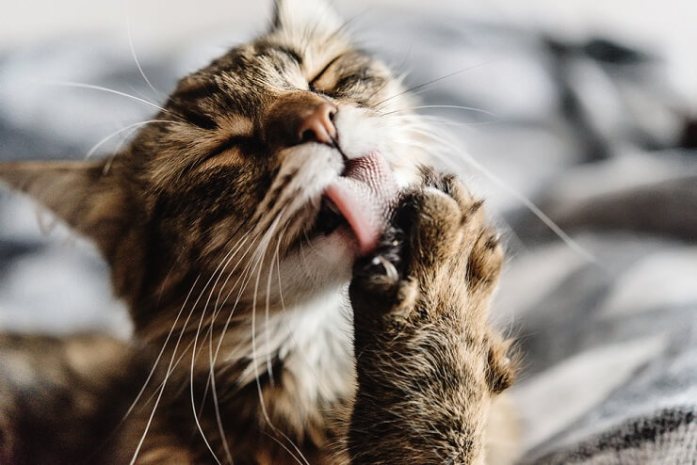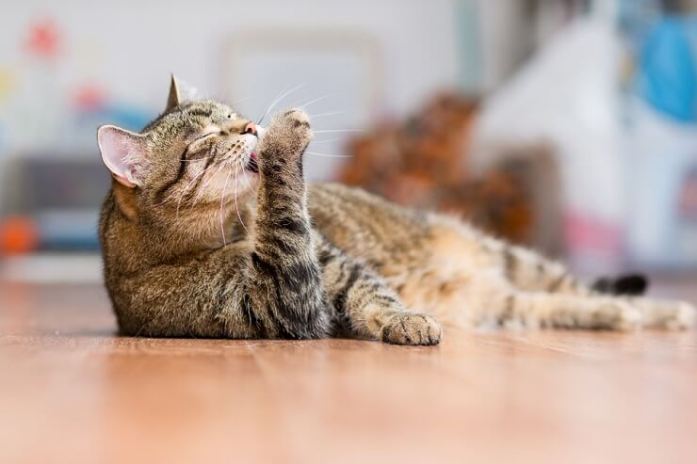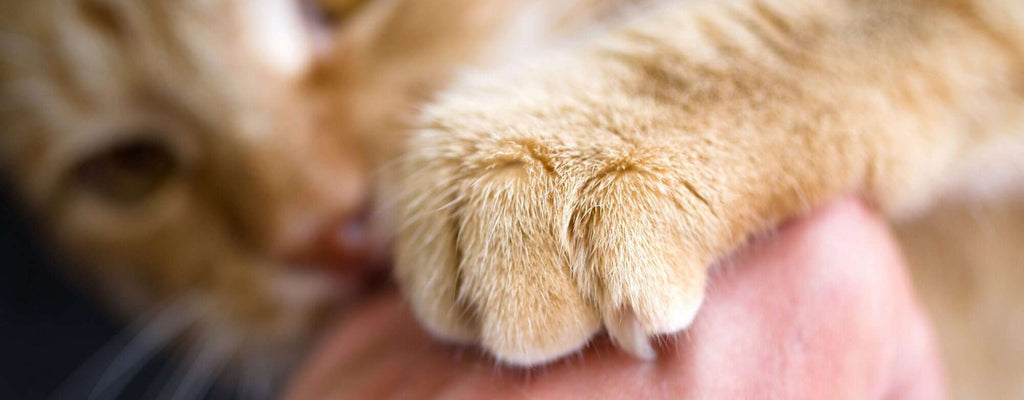You might notice your cat biting, chewing or pulling their claws. However, cat nail biting is usually no cause for concern. Generally, it is regarded as normal behaviour for cats as it is simply part of their regular grooming routine. This happens if their nails might be getting too old. It could also occur when there is loose dirt or debris around the nail your cat wants to get rid off.
However, excessive nail biting or chewing can signal that something is amiss with your cat. In this article, we will discuss the reasons why your cat might be biting their nails, and when you might need to be concerned!
Reasons For Cat Nail Biting

Regular Grooming
As earlier mentioned, pulling, chewing or biting of claws can occur simply due to normal grooming reasons. A cat’s claws do not grow like how our nails do. Claws usually grow in layers, with the newest layer on the bottom.
Over time, outer layers of a claw can start to wear down, causing it to crack, peel or simply shed away. Cats might pull or chew their nails in order to speed up that process. This helps to expose the newer, sharper layers of the claw.
Cats may also try to groom themselves by trying to remove trapped dirt or debris from their nails. As their paws are constantly in direct contact with the floor, they can easily get dirt, dust and other debris stuck in their claws.
In some events, simply licking their claws may not be enough to remove stubborn debris. Hence, you may observe your feline pal tugging or pulling at their claws to dislodge any residual debris that may be trapped.
For the most part, nail biting or pulling is usually no cause for concern.

Health Problems
Excessive chewing may be due to a medical or health issue, with varying levels of severity.
Your cat could have a small cut on their paw pad, broken a claw or injured one of their toes. This could result in some pain and/or discomfort. Thus, cats may chew or pull on their nails to try to relieve this discomfort. You can carefully inspect their paws for any signs of injury.
If you do not notice any sign of injury, there may be underlying medical reasons for your cat pulling his or her claws. Although unlikely, we’ve compiled a short list of possible causes below.
- Bacterial Infection
- Yeast Infection
- Ringworm
- Brittle Nails (more common in senior cats)
Cutting your cat’s claws too near to the nail bed can also cause them to be more susceptible to bacterial and yeast infections. Contact your veterinarian if you notice that your cat is experiencing discomfort, has difficulty walking, or if you notice any redness, tenderness, bleeding, raw skin or hair loss.

Behavioural Issues
Sometimes, grooming can also turn into an obsessive behaviour, such as compulsive scratching, licking or chewing/pulling on their claws.
Issues such as boredom, anxiety, and loneliness can cause your cat to groom excessively. Similar to how we might bite our nails when we are nervous, a cat may chew on their claws if they are feeling anxious. They may find the act of grooming to be self-soothing.
There may be many reasons why your cat feels anxious. Moving to a new home, changes in their daily routine, diet changes and separation anxiety can all cause anxiety in cats.
To stop behavioural nail biting, you will need to pinpoint the cause of your cat’s stress. Next, you will need to eliminate the cause, or help them adapt, if need be. Your cat may simply need more cuddles and playtime. Interactive toys or one-on-one play time can often help reduce anxiety in cats.
Ways To Help Reduce Nail Biting In Cats

If you do not notice any signs of health or behavioural problems, there is no need to be concerned. Here are some basic nail care tips for cats that can help reduce nail biting.
Provide Your Cat With Opportunities To Scratch
Scratching is a normal instinctive behaviour of cats. While scratching, they are able to remove loose, dead layers of their claws. Providing your cat with ample avenues to scratch can thus reduce cat nail biting.
Keep Your Cat’s Claws Trimmed
Overgrown claws can cause discomfort and even injure your cat. It is recommended for cats to have their claws trimmed every two weeks. However, be sure not to trim too close to the nail bed!
If you’d like to know more about caring for your cat, you can also read ‘ Subtle Signs Your Pet Isn’t Feeling Well’ and ‘Cat Behaviour – Understanding Their Weird Antics’!




